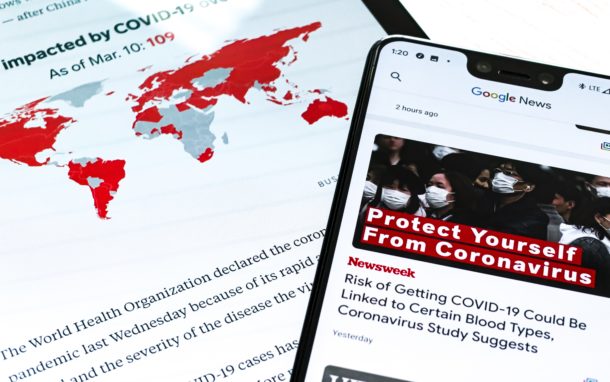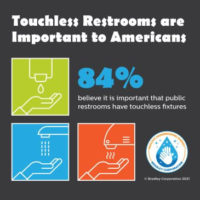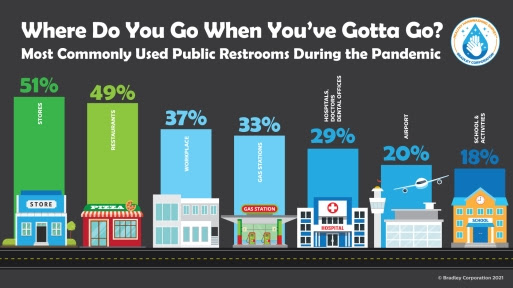For the vast majority of businesses, the pandemic has been a major wake-up call in how businesses are run. One of the major lessons taken is how to prepare a business to survive in times of great change or crisis. A business continuity plan is vital for businesses of all sizes and in any sector Read more
pandemic

For the vast majority of businesses, the pandemic has been a major wake-up call in how businesses are run. One of the major lessons taken is how to prepare a business to survive in times of great change or crisis.
A business continuity plan is vital for businesses of all sizes and in any sector and it’s something that you should be putting in place now.
What is a business continuity plan?
Business continuity is a term you’ve probably heard before, even if you don’t quite know what it means. Simply put, a business continuity plan outlines how a business will continue to provide key services at an acceptable level during a time of disruption or disaster.
What triggers a business continuity plan can be any of a wide range of situations. It could be a natural disaster, a fire or flood in your building, data theft, the loss of key personnel, political matters or something like a pandemic.

Who should be involved?
While it is usually the leader of a business and any outside consultants that develop the disaster recovery plan, all employees need to be aware of it and what their roles are when a business continuity plan is triggered.
Ensure that everyone knows the plan and what to do in an emergency. Put training in place such as medical training from MyCPR Now or cybersecurity and data protection awareness from your IT company.
Why do you need one?
Well, do you want your business to be able to operate in the event of a disruption? Overwhelmingly, the answer should be yes. Not being able to service your customers can cause huge reputational and financial damage and could put you out of business. Many business insurance companies will not be able to provide you with insurance if you cannot show that you have a business continuity plan in place.
What should be included?
No matter what business you’re in, or how big a company you have, the structure of your business continuity plan should concentrate on three particular areas. These are resilience, recovery and essential contingencies.
Resilience is working to identify your business-critical systems and personnel and working to arrange these with possible disruption in mind. This can include the distribution of key personnel, data backups etc. Can key systems be accessed off-site should something happen to your premises?
The second part of your plan should focus on how fast you can restore your key systems in the event of a disruption.
The contingency element of your plan should put in place a number of options that deal with different potential situations. For example, what would you do if certain key managers were unavailable or a key supplier was also affected?
Key points
A business continuity plan is important for all businesses. Even if you are a sole trader with no employees, you should think about all of the potential disruptions that could face your business and put measures and plans in place to protect your business.

The report to the President of the United States examines how buildings can protect and promote public health The National Institute of Building Sciences Consultative Council has issued its 2020 Moving Forward Report, looking closely at the importance of healthy buildings. The report examines how buildings can protect and promote public health, providing recommendations for President Biden Read more
The report to the President of the United States examines how buildings can protect and promote public health
The National Institute of Building Sciences Consultative Council has issued its 2020 Moving Forward Report, looking closely at the importance of healthy buildings.
The report examines how buildings can protect and promote public health, providing recommendations for President Biden and policymakers on three components of healthy buildings: indoor environmental quality, the importance of design in promoting health, and promoting knowledge transfer between building owners and public health officials.
“Ensuring that the spaces where we live and work are healthy and safe for continued occupancy is critical to overcoming the pandemic,” said Lakisha A. Woods, CAE, President and CEO of NIBS. “This is a fundamental pillar of public health and community resilience. The concept of healthy buildings goes well beyond continual sanitation of a building’s indoor environment to eliminate pathogens.”
The NIBS Consultative Council assembles high-level building community leaders to make collective recommendations directly to the President of the United States and policymakers to improve our nation’s buildings and infrastructure.
Among the recommendations in the report:
- The Administration, U.S. Department of Energy (DOE), The Centers for Disease Control and Prevention (CDC), U.S. Environmental Protection Agency (EPA), National Institute of Standards and Technology (NIST) and other relevant federal agencies should increase investment into critical research on the impacts of indoor environmental quality (IEQ) and resilience on health and productivity. Of particular importance is research into how retrofits to the nation’s existing building stock can be used to improve IEQ.
- Federal agencies, including DOE, NIST, EPA, General Services Administration (GSA), and United States Department of Housing and Urban Development (HUD), should support research aimed at identifying improvements to building codes and other criteria that can provide cost-effective approaches to enhanced building performance. This should include opportunities to shorten the regulatory and code development process, and enable it to be more anticipatory of current and future disruptions to public health.
- Congress, U.S. Department of Transportation, HUD, DOE, Federal Emergency Management Agency and EPA, with input from the community-based organizations, advocates, and the private sector, should identify and enact policies, including incentive programs, that encourage building owners and operators to invest in critical activities that promote healthy IEQ. Clean water, healthy high-performing buildings, clean interior and exterior air, and fair and equitable access to healthy and resilient places are critical components of our nation’s infrastructure. Particular incentive should be given to supporting improvements in disadvantaged communities or populations that are impacted by flaws in existing structures, those constructed with unsafe or toxic materials, or that present unsafe living or working conditions to occupants.
Visit the Consultative Council for more information or to read the full report.

According to a national survey by Bradley Corp., half of the population continued to use public restrooms throughout the pandemic. Just 13% of Americans said they completely avoided using a public restroom while 50% visited restrooms just as they always had. Another 37% said they were uncomfortable but had, at times, utilized a public restroom Read more
According to a national survey by Bradley Corp., half of the population continued to use public restrooms throughout the pandemic. Just 13% of Americans said they completely avoided using a public restroom while 50% visited restrooms just as they always had. Another 37% said they were uncomfortable but had, at times, utilized a public restroom when necessary.
The most common places where Americans used a public restroom were stores, restaurants and their workplace. The majority who visited public restrooms took precautions to reduce their likelihood of coming in contact with germs. 63% had ahold of a paper towel as a protective barrier when they operated the toilet flusher and faucet handles or reached for door handles. Alternately, another group employed their foot to flush the toilet or opened and closed doors with their butt.

The annual Healthy Handwashing Survey from Bradley Corp. queried 1,050 American adults regarding their public restroom usage, handwashing habits and concerns about the coronavirus and flu. Participants were from around the country and were evenly split between men and women.
Strong Preference for Touchless
Since Americans have relied on evasive measures to avoid germs in public restrooms, it’s not surprising that 84% believe it’s important to have touchless fixtures. In fact, nearly 70% say they’re more likely to return to a business that has touchless restroom features. On the other hand, 56% have a negative impression of a business that doesn’t have touchless fixtures.
When it comes to which fixtures Americans prefer to be touchless, the toilet flusher, faucets and entrance doors top the list.
“Touchless restroom fixtures add a significant level of comfort for Americans when they’re out and about and need to use a public restroom,” says Jon Dommisse, director of strategy and corporate development for Bradley Corp. “We’ve all become more cognizant of potentially germy touch points so eliminating an area of concern is another way we can help resume our normal lives again.”

Germ Concerns Significant
The Healthy Handwashing Survey, which was conducted in January 2021, found that 86% of Americans are more conscious about coming in contact with germs as a result of the Coronavirus.
That concern has led to a spike in handwashing and hand drying. The survey revealed that nearly 90% are washing their hands more frequently or more thoroughly as a result of the Coronavirus. In terms of frequency, 57% are sudsing up between six to 15 or more times a day. And, 73% are drying their hands more frequently or more thoroughly.
That’s significant because hand drying is an important step in the handwashing process. The Centers for Disease Control and Prevention (CDC) explains that, “Germs can be transferred more easily to and from wet hands; therefore, hands should be dried after washing.”
Overall, Americans correctly believe handwashing is a better germ-fighter than hand sanitizer. 61% understand their hands are less germy after washing with soap and water than after using hand sanitizer – a fact supported by the CDC. For times when soap and water are not available, the CDC says that using hand sanitizer is a good, second option for hand hygiene.
“Handwashing remains one of the easiest and most effective ways to stay healthy and reduce the likelihood of spreading germs or viruses to others,” says Dommisse. “When you pair soap and water with vigorous and thorough scrubbing, you’re literally removing and sending bacteria and germs down the drain.”
For more information, visit bradleycorp.com/handwashing.
After a challenging year resulting from the global pandemic that hit full force in March 2020, the Plumbing-Heating-Cooling Contractors—National Association (PHCC) reports that – one year later – there are signs that conditions are improving. A contractor sentiment survey conducted by PHCC finds that 84% of respondents rank the continuing impact of COVID-19 on their Read more
After a challenging year resulting from the global pandemic that hit full force in March 2020, the Plumbing-Heating-Cooling Contractors—National Association (PHCC) reports that – one year later – there are signs that conditions are improving.
A contractor sentiment survey conducted by PHCC finds that 84% of respondents rank the continuing impact of COVID-19 on their businesses as having either a “low” or “medium” impact compared to 57% in spring 2020, when PHCC first began tracking trends during the pandemic. In addition, the number of people ranking impact as “medium high” to “high” has dropped to 9% from 43% in spring 2020.
“A year after COVID-19 hit, PHCC members indicate that they are cautiously optimistic that we are turning a corner toward better times ahead,” says PHCC President Hunter Botto. “Respondents also noted that their businesses have stabilized after several difficult months of disruption. They also see new business opportunities in the future, which is very good news for our industry.”
In fact, an annual environmental scan conducted by PHCC in January 2021 predicted an increased demand for home improvement spending; touchless products; upgraded and energy efficient equipment; smart technology; air and water filtration and purification; and IAQ markets, including UV and bipolar ionization.
While the overall outlook is positive, the plumbing and HVACR contractors responding to the sentiment survey cite several ongoing challenges, including maintaining a safe and fully operational staff; increased operating costs related to new safety requirements; addressing employee and customer health and safety concerns; customer delays on projects because of economic concerns; disruptions in the supply channel; and a fear of a potential recession.
Regarding manufacturers and suppliers’ responsiveness to supply chain issues, respondents noted many have been helpful by offering creative alternatives to products currently unavailable. There was an overall recognition that manufacturers and suppliers are also facing material cost increases and shortages, transportation challenges, workforce issues, etc. “They have been super helpful, but have had their own people issues, concerns and interruptions,” one contractor said.
Contractors indicate they have established many safety procedures to mitigate safety risks for employees and clients, including employee screening, social distancing, disinfection measures, increased communication about safety protocols and requirements for Personal Protective Equipment.
“As we look back on the last year, PHCC members – operating as essential businesses – illustrated time and time again that they are true professionals committed to keeping their employees, customers and communities healthy and safe,” Botto says. “As always, our members have shown they are extremely resilient in tough times.”
Another positive indicator is that – after recently completing its annual membership renewal process this spring – PHCC realized an increase in both renewing and new members.
“We are grateful for the loyalty demonstrated by our members throughout this crisis,” Botto says. “We are also excited to see growth in membership when business owners are assessing the ROI on every expenditure. Now more than ever, they can see the value of supporting and engaging with their association.”
To help navigate the many unexpected changes they faced, members relied on PHCC resources and videos via its COVID-19 Recovery Center, as well as monthly webinars, state and local support, advocacy, member discounts and access to Personal Protective Equipment.

The plumbing industry has been essential through the rise of the pandemic over the last year or so. Thankfully, this means many plumbers have been able to continue working (while adhering to COVID-19 guidelines) rather than losing out on all essential work. However, because of the rate the virus spreads, there’s also a very large Read more
The plumbing industry has been essential through the rise of the pandemic over the last year or so. Thankfully, this means many plumbers have been able to continue working (while adhering to COVID-19 guidelines) rather than losing out on all essential work. However, because of the rate the virus spreads, there’s also a very large chance that many people have put off plumbing issues in their homes in fear of letting someone new into their homes.
Now there’s a light at the end of the tunnel and vaccines are beginning to be administered into the most vulnerable people, the rate of infection and other statistics should continue to drop. This means the world can get back to some sort of normality, and this means more people will be willing to let plumbers into their homes to fix their problems. However, with so many plumbers like you out there, how are you going to ensure you get your fair share of customers? Take a look at these effective methods to increase your customer base in a post pandemic era.
Show case studies
Case studies are a wonderful way of proving to potential clients that you can do the best work, whether it’s tightening a leaking pipe or fitting a new bathroom. At each project, take plenty of pictures (with the owner’s consent, of course) and use them on your website and at each pitch to help get potential customers on board with you, rather than other plumbers.
Continue to abide by safety laws
Even when everyone has had their vaccines, there’s still bound to be fear for many potential customers that the virus could be spread in their home. Continuing to abide by safety laws in your country or region will help them feel at ease. Many business owners are taking advice from Carlos Ramirez Safety to ensure the work they’re doing is as safe as possible for both themselves, and their clients. A professional plumber is almost always more likely to be hired over someone who’s not willing to put safety first.
Talk about your services on social media
Social media is the way forward in this day and age, and if you want to attract more customers, you should be using platforms like Facebook and Instagram to showcase the work you’re doing. Much like case studies, you can use pictures and videos to show transformations you’ve completed, as well as displaying your contact details and price list. Using the right hashtags will help you reach the right people and doing it consistently will ensure they call you when they have a plumbing issue.
Create an offer that’s hard to refuse
Finally, all plumbers will be looking to increase their customer base once restrictions begin to lift, so you need to get ahead of the game. Create offers and discounts for new and returning customers to help ensure people choose you over your competitors. Remember to always reward loyalty, and welcome new customers differently to make each customer feel as special as possible.
